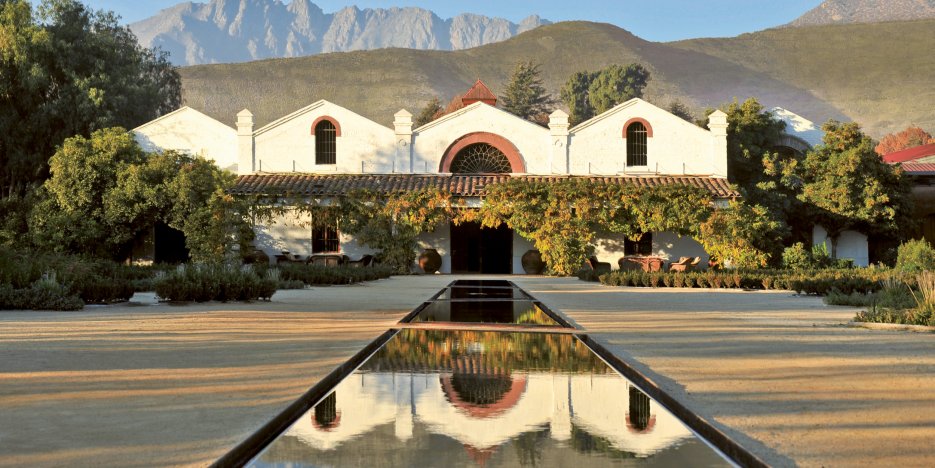

Don Maximiano Founder’s Reserve 2018 6x75cl
With a beautiful ruby-red colour and a violet hue, the 2018 vintage of Don Maximiano Founder’s Reserve captivates with aromas of red fruits recalling cherries, blackcurrants, and crème de cassis framed by light notes of tarts, nuts, and roasted coee. In line with the perception on the nose, the palate offers refreshing acidity that heightens the red fruits, followed by spices and balsamic notes that recall dill and rosemary. The excellent palate shows tannins with extraordinary texture and tremendous body, making this a very persistent wine with great depth.
Vineyards
The Don Maximiano vineyard is located in the Aconcagua Valley and the oldest among them are Max I, Max II and Max V blocks. The region has a long dry season with moderately warm summer days cooled by the soft evening breezes that enter the valley from the Pacific Ocean. Cabernet Sauvignon and Carmenere vines were planted in 1978 and 1993, respectively, while the Petit Verdot was planted in 1999. The three vineyard blocks that contribute grapes for Don Maximiano Founder’s Reserve are planted on north or northeast facing hillsides with 5°–25° of slope. Soils are volcanic, colluvial and piedmont (Max I and II) or alluvial (Max V) in origin, with good drainage conferring low to moderate vigour. The colluvial and volcanic rocky soils of Max I show high presence of mica with clay-silt texture. Max II has deep colluvial soils of volcanic origin, with loam to sandy-loam texture, and both have 30–40% stone content. Max V has deep gravelly alluvial soils with 50% stone content and excellent drainage.
Vintage
The idyllic climatic conditions experienced throughout the season favoured an outstanding performance of our vineyards, as temperatures fluctuated among the historic parameters, concluding the season with moderate temperatures. This allowed a very balanced ripening and harvesting, as well as ideal sanitary conditions, while enabling complex flavours in the grapes. We would dare say this is a vintage we truly believe was blessed by nature. In Max I and Max V vineyard blocks, the season began with considerable water reserves in our soils equivalent to 49% above average records, due to 230 mm of rainfall we experienced from May to October, being 154 mm the historical average for this period. Spring unfolded with normal temperatures as some rains sprinkled the vines throughout October, allowing a very balanced bud break among the historical dates for our vineyard. Flowering reached its peak on November 15, while heat summation up to this period was practically the same as the previous vintage, giving the message that we would face a season with no surprises. But December concluded with a heat summation 8% higher than average, making us believe that heat would be the pattern of the season. January, nevertheless, turned out to be quite opposite, as heat summation was 4,1 lower than historic and average temperature followed the same trend with half a degree lower than historic, scoring 19,5°C. Nature seemed to settle down during February and March scoring average temperatures, while April was slightly warmer but not enough to catch out attention, wrapping the season with a heat summation that was only 1% higher than average. The 2018 season will surely be remembered as an ideal one, with nature reminding us of the importance of preceding climatic events in previous seasons and how these are closely related in the subsequent performance of our vineyards.
Winemaking
Grapes were handpicked in the cool morning hours and transported in small 15-kg boxes to the winery, where they were inspected on a double selection board to assure only the nest quality grapes go to the nal blend. Fermentation took place in small-volume stainless steel tanks to allow a larger proportion of contact between the skins and the juice. Up to three daily pump overs were made according to the desired level of extraction. Depending on the individual development of each lot, they completed a total maceration time of 8 to 30 days. All lots were aged for 22 months in French oak barrels (65% new), where malolactic fermentation, clari cation and stabilization occurred in a natural way. To best express the terroir of the Aconcagua Valley, and to increase the wine’s complexity, percentages of Malbec, Petit Verdot, Carmenere and Cabernet Franc were added to the final blend to make it a truly complex wine.
Enjoy with:
- Grilled and Roasted Red Meats
- Pizza/Pasta
- Casseroles/Stews
- Mild Creamy Cheeses
- Mature Strong Cheeses


